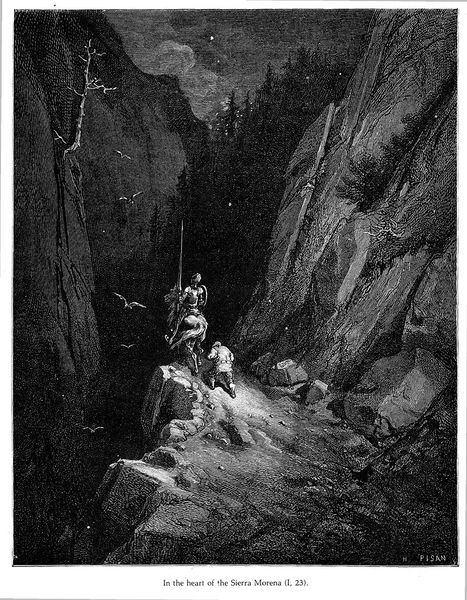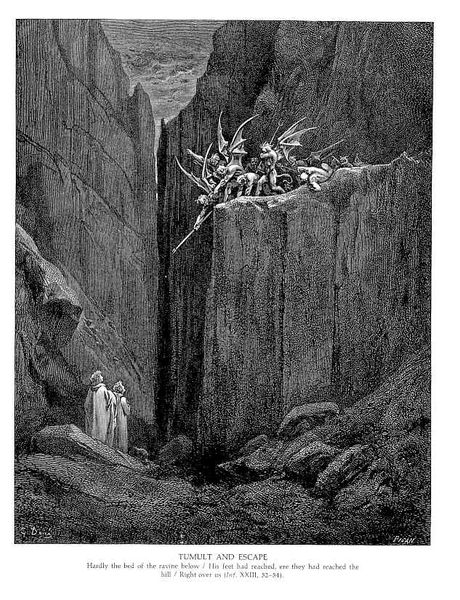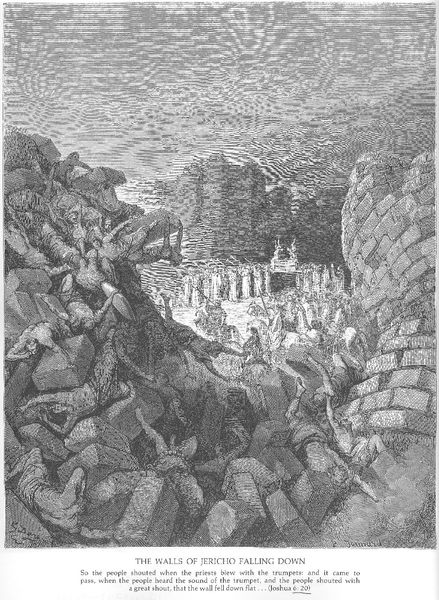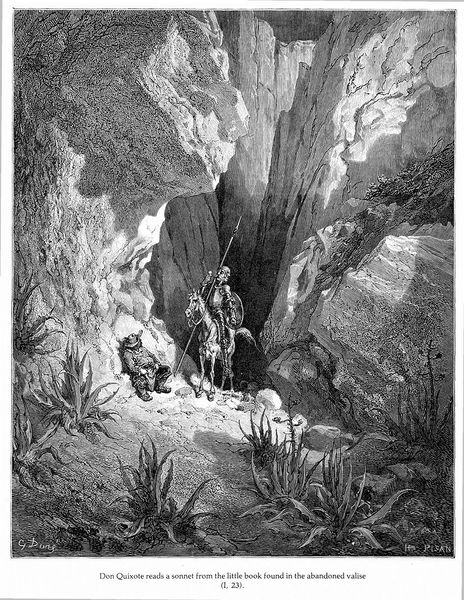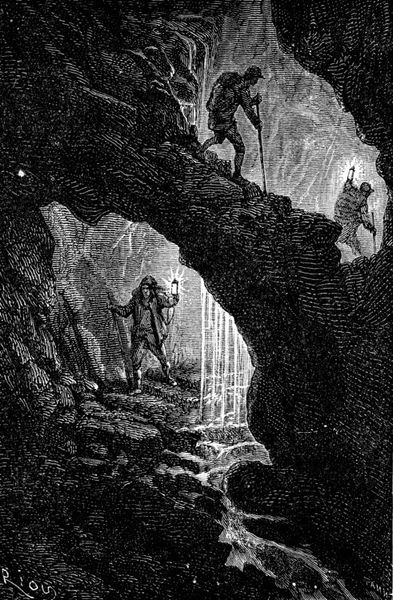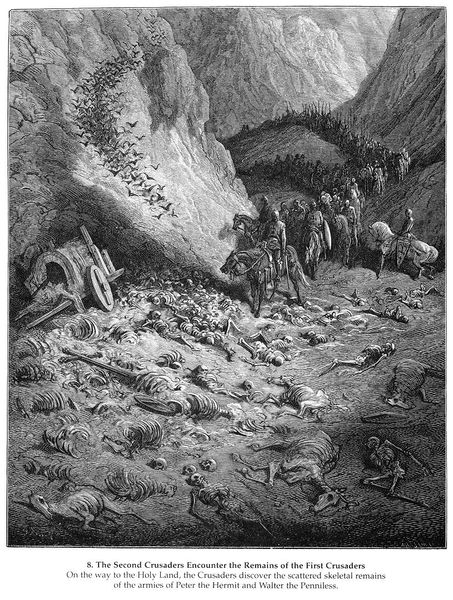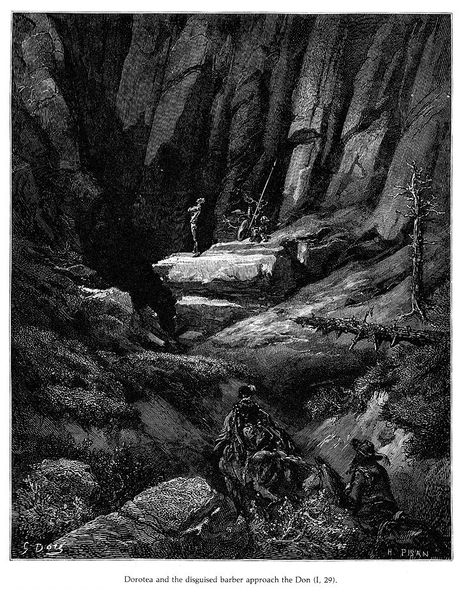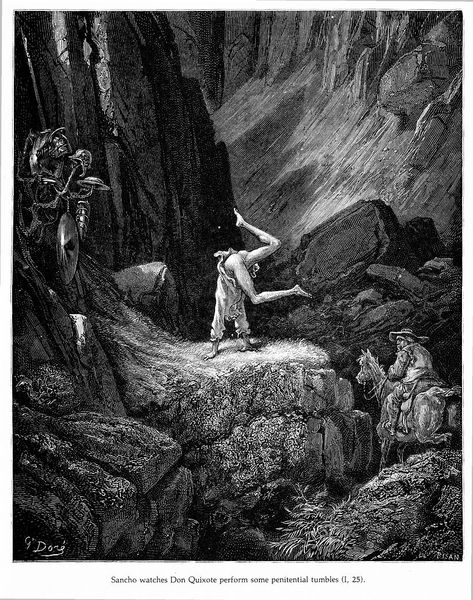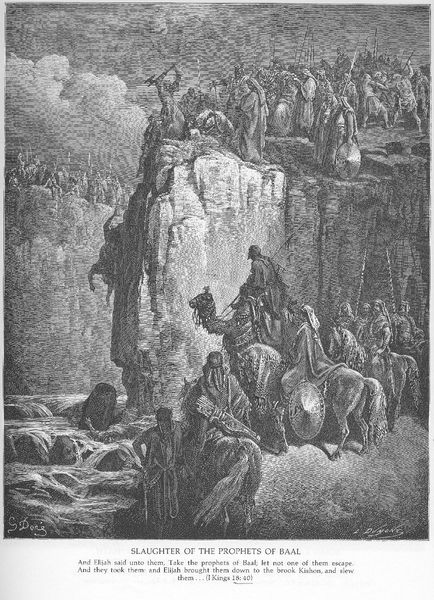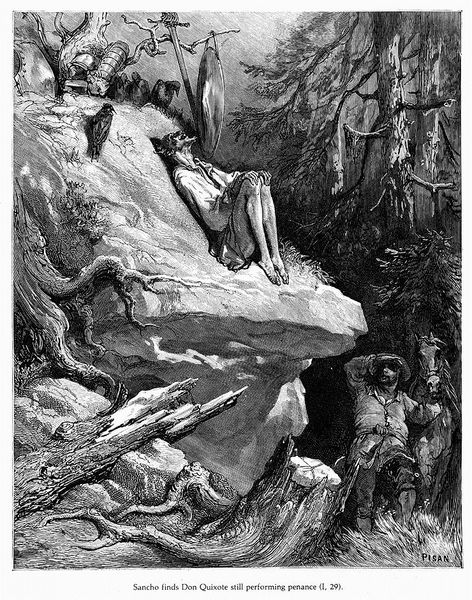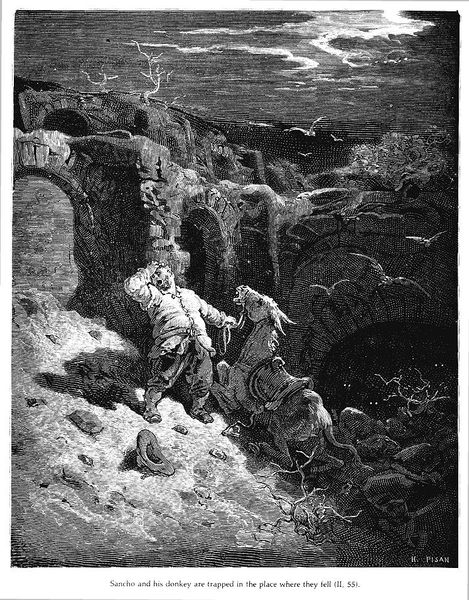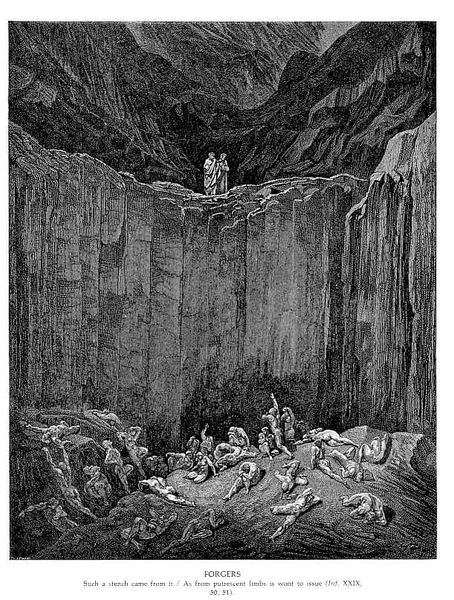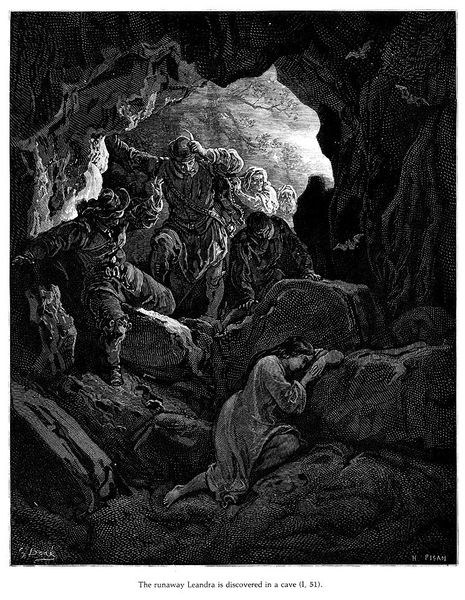
drawing, photography, ink, engraving
#
drawing
#
narrative-art
#
landscape
#
photography
#
ink
#
christianity
#
history-painting
#
engraving
#
natural form
Copyright: Public domain
Editor: Looking at this engraving of "David Shows Saul How He Spared His Life," supposedly by Gustave Dore, I'm struck by the dramatic contrast between the figures in the foreground and the vast landscape. The figures seem small, almost overwhelmed. What emotions or themes do you think Dore was trying to evoke through this piece? Curator: Dore's not just depicting a scene, is he? For me, it’s an almost operatic rendering of human drama dwarfed by divine landscape. You’ve got the tiny figures in the mouth of that forbidding cave, clinging to some kind of moral high ground…and then the landscape looms—all potential energy, almost wrathful. Do you feel that imbalance, the contrast of puny morality plays versus the truly sublime? He's saying something about us, isn't he, and our grand little narratives? Editor: Absolutely, I get that feeling of insignificance. It is like a visual sermon about the limitations of human conflict against the backdrop of eternity. Does the use of light and shadow contribute to this? Curator: Bang on, spot on! The light picks out the supposed 'good' guys. Everyone else and everything gets swallowed by shadow. I find it hilarious because what Dore really means, it strikes me, is that moral certainty itself can be another kind of shadow – blinding us from the fuller picture. Dore is sly; he has a dry humor I just adore. Editor: That's a really interesting interpretation! I was so focused on the immediate narrative I missed the subtly humorous critique. Curator: That's what these grand old dramas do. We’re blinded, caught in their spell. A good trick of light and dark. Keep looking past it and, yes, the slyness creeps through and rewards us. It winks. Editor: Well, I will never look at a Dore engraving the same way again. Curator: Wonderful. He'd want you to laugh a little, I suspect. He certainly laughed a lot making it.
Comments
No comments
Be the first to comment and join the conversation on the ultimate creative platform.
